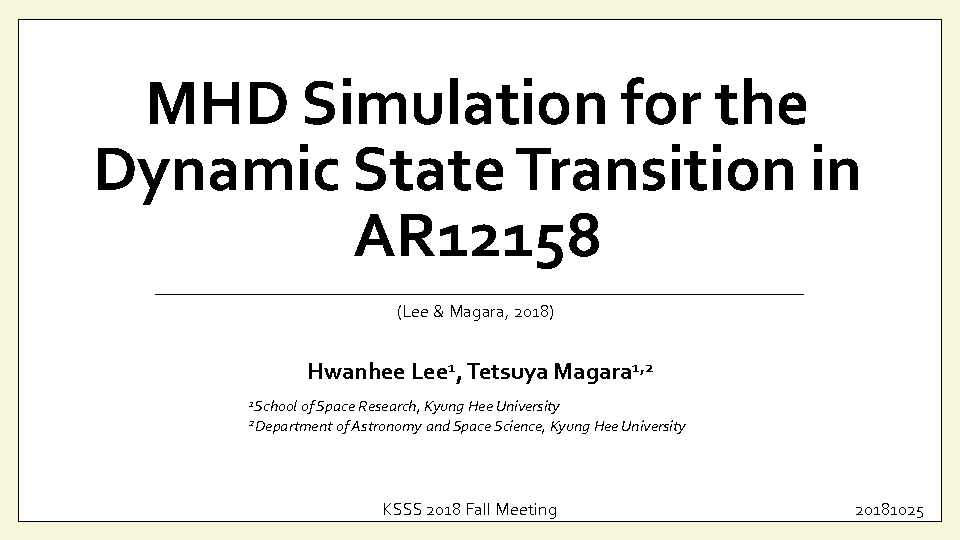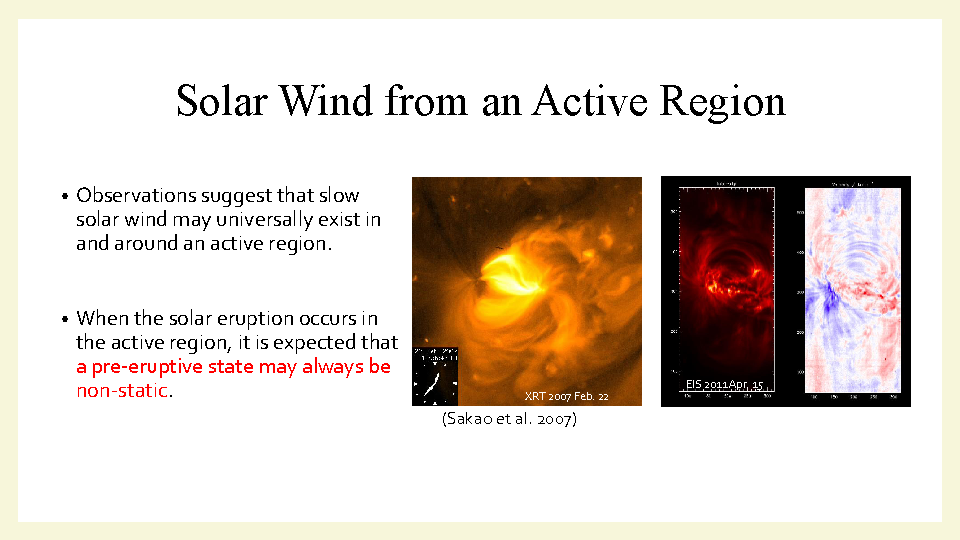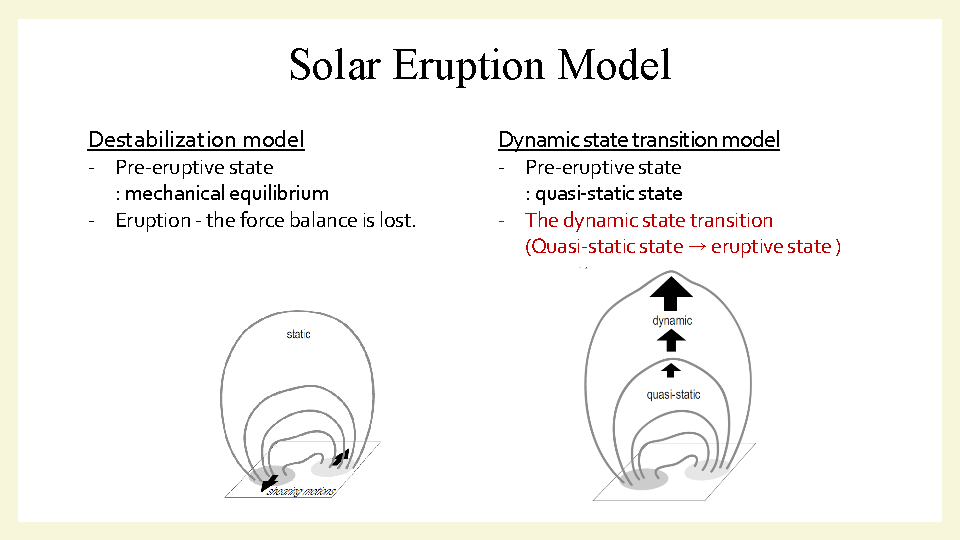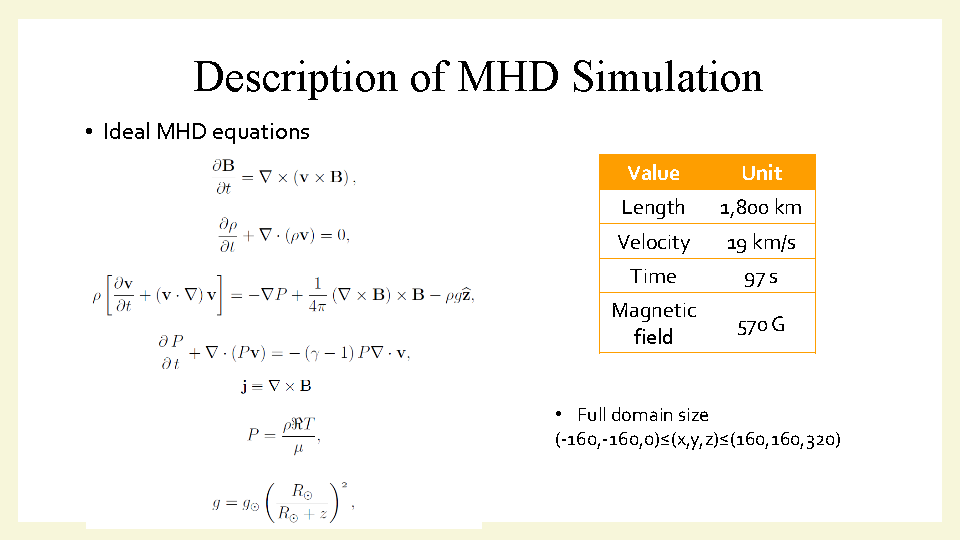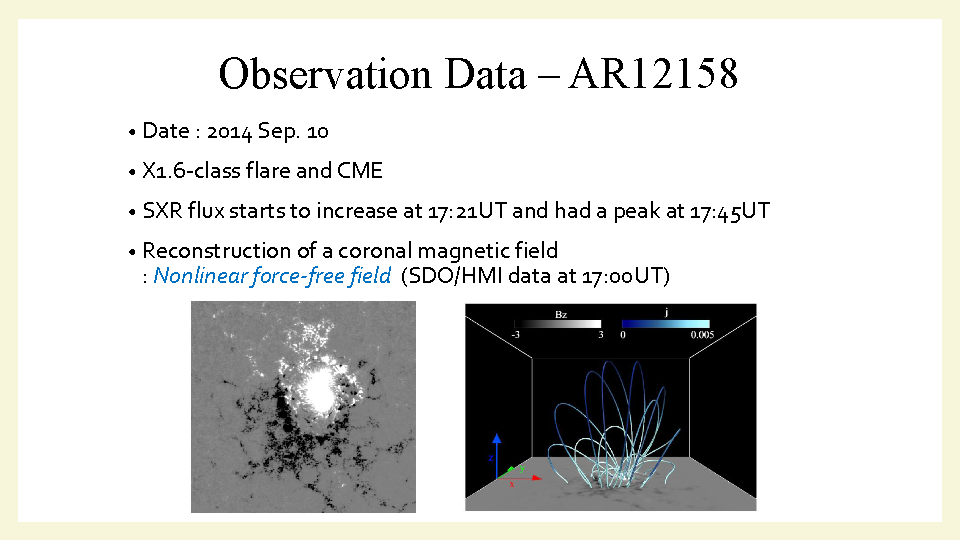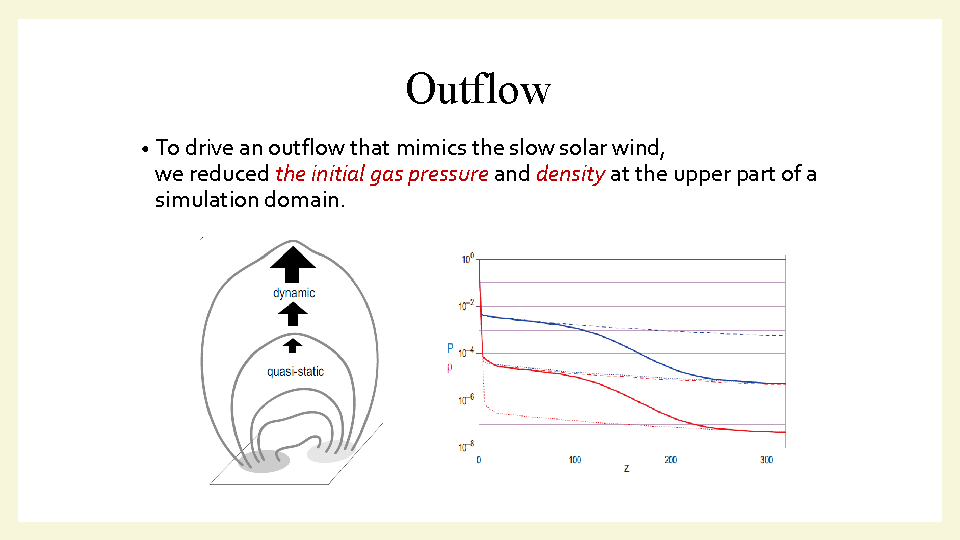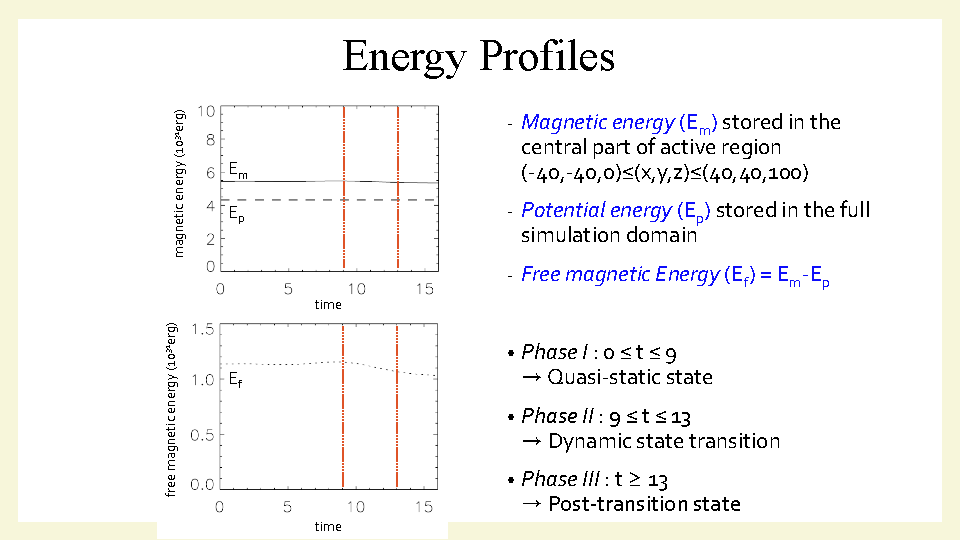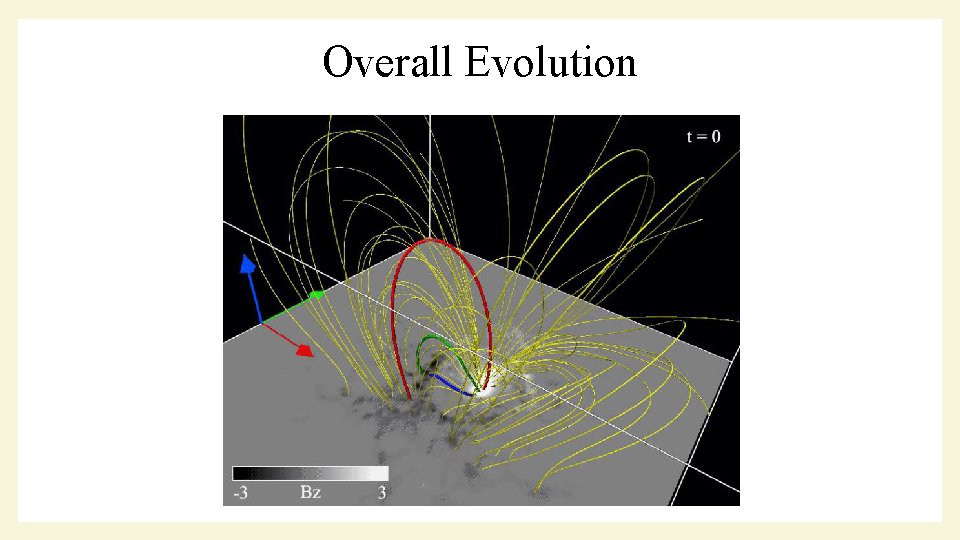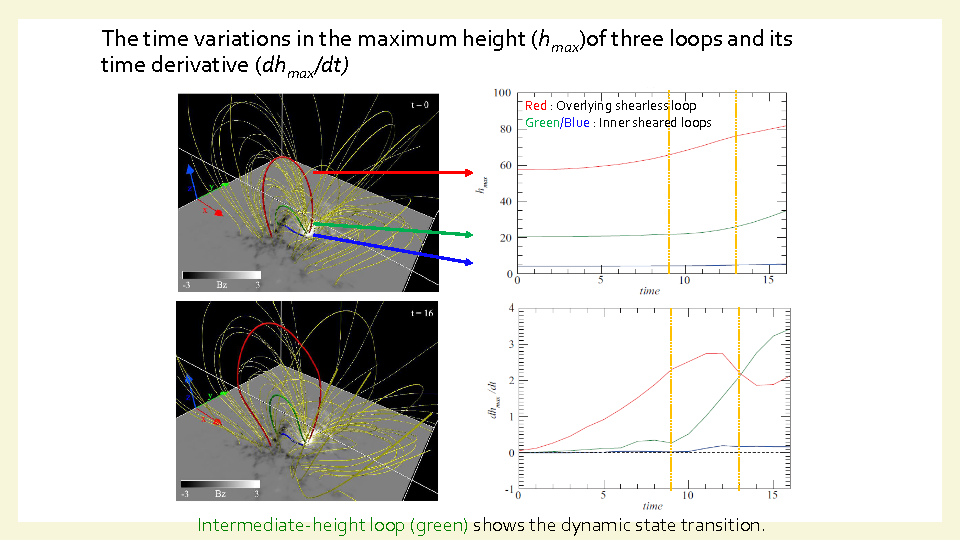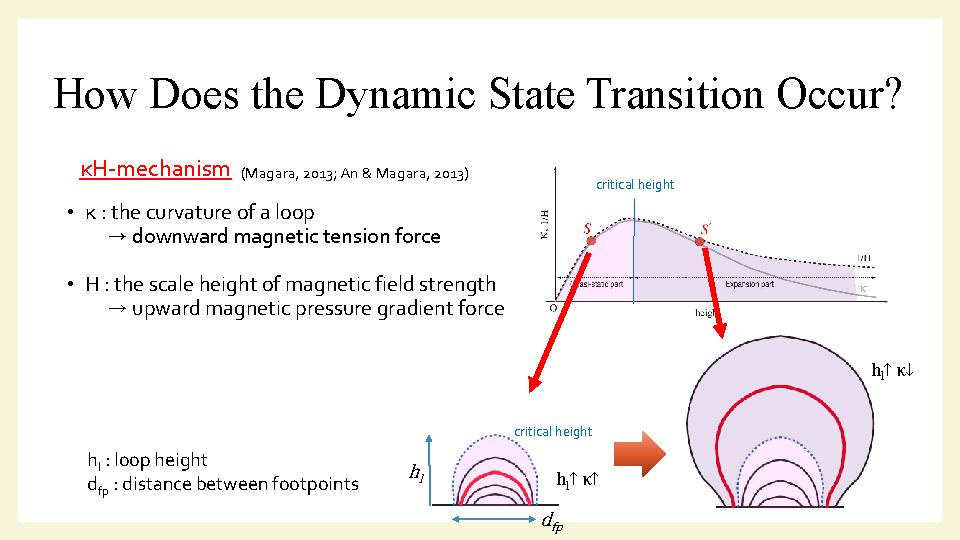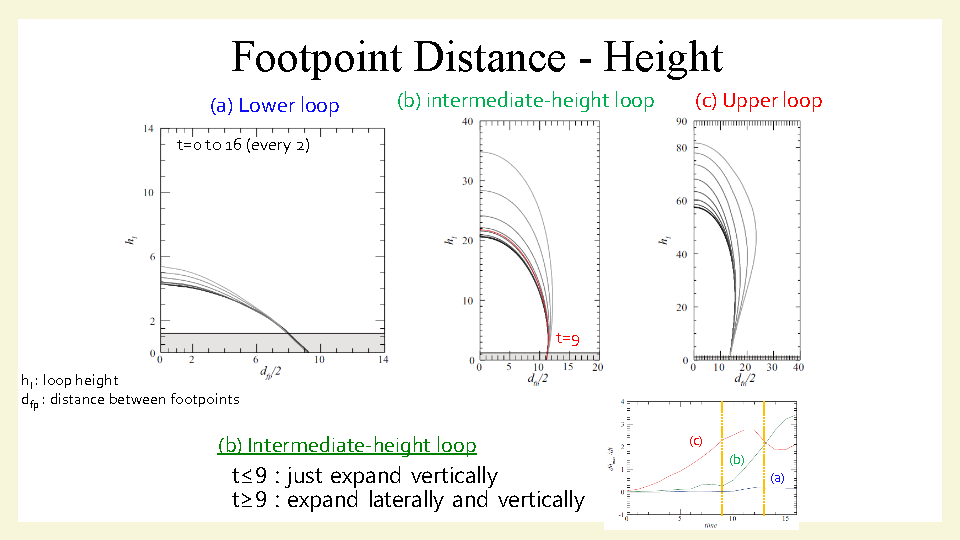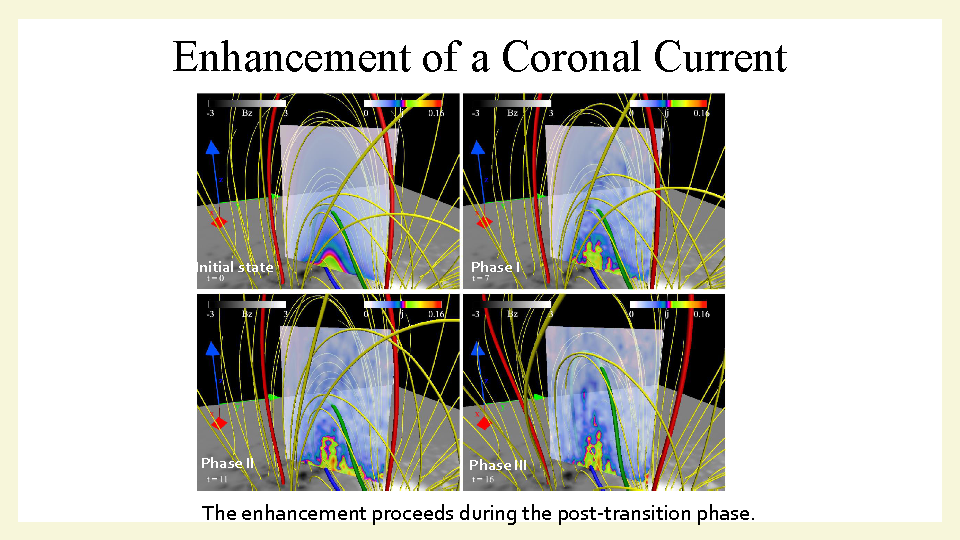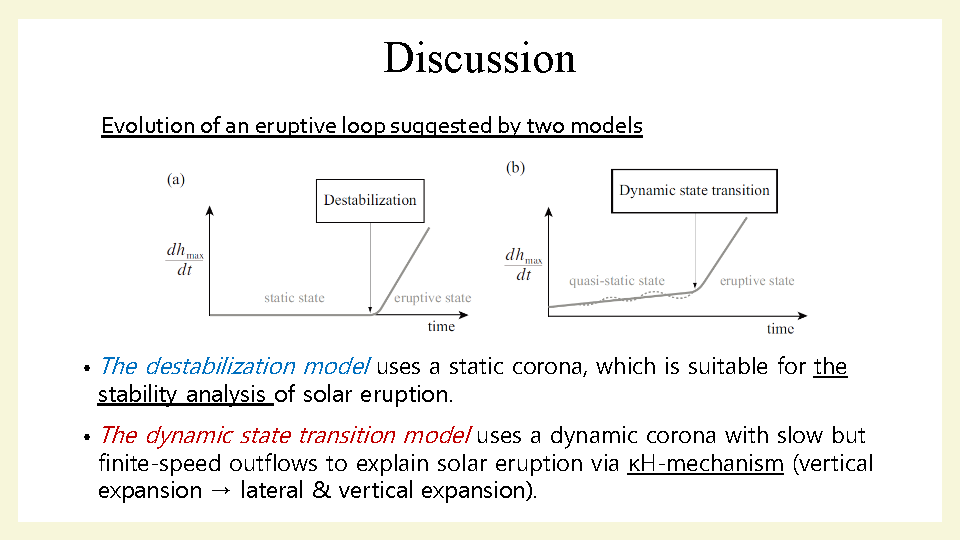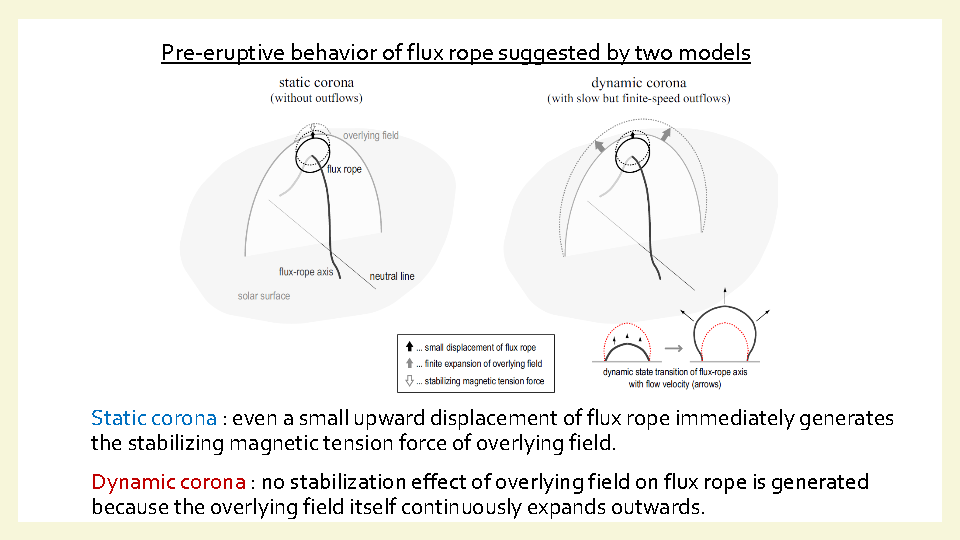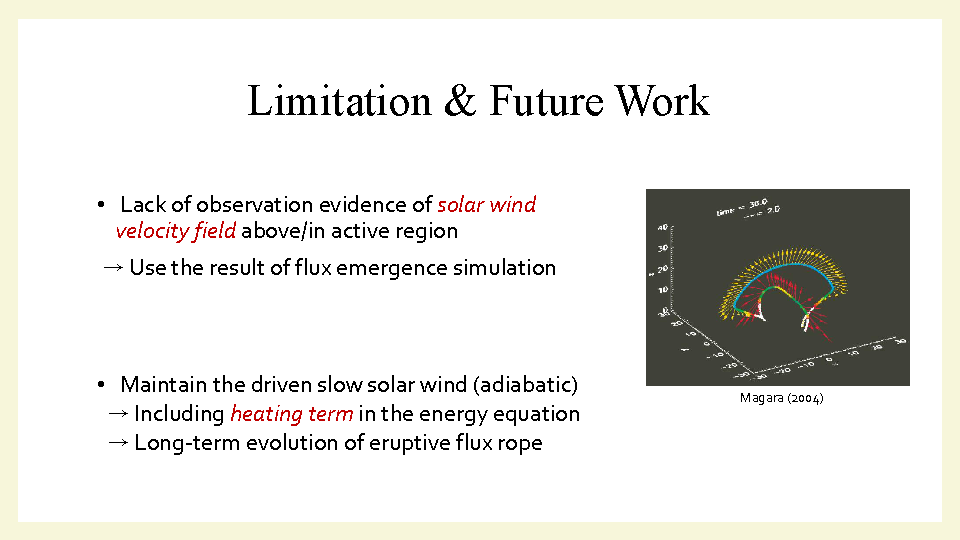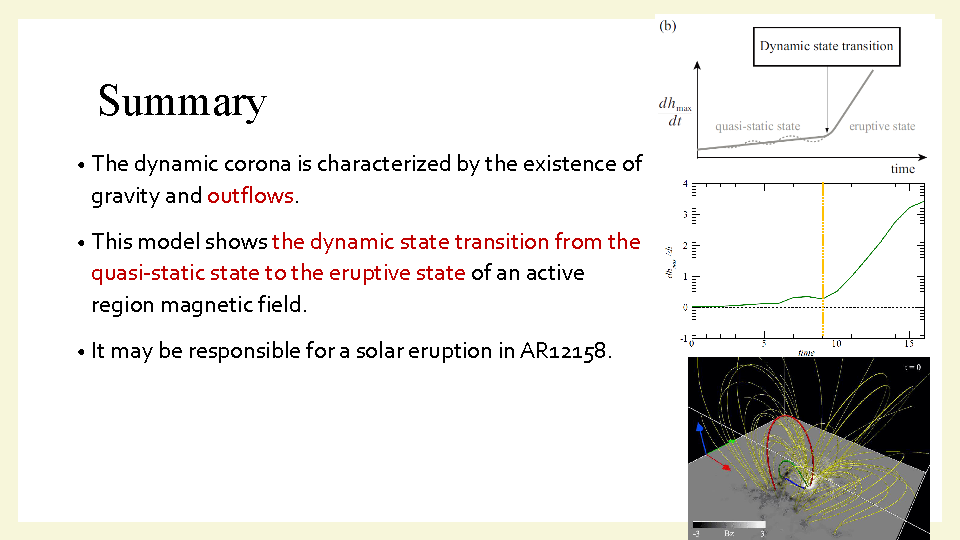MHD Simulation for Investigating the Dynamic State Transition Responsible
for Solar Eruption in Active Region 12158
We presented a magnetohydrodynamic model of solar eruption observed in Active Region (AR) 12158. In this model effects of gravitational field and solar wind were taken into account, the latter of which made the AR's magnetic field deviate from a static state before the eruption. To achieve a quasi-static pre-eruptive state, we performed a three-dimensional MHD simulation in which a gas pressure-driven outflow playing the role of solar wind was imposed on upper part of nonlinear force-free coronal magnetic structure of the AR, which had been reconstructed from photospheric vector magnetic-field data. The simulation showed that one of the inner sheared loops (intermediate-height loop) showed the dynamic state transition from the quasi-static pre-eruptive state to an eruptive state, which is essentially different from destabilization of static magnetic structure. We demonstrated that the dynamic state transition was associated with shape change of the loop from a vertically expanding shape to a vertically and laterally expanding one, as suggested by κH-mechanism.
Reference
Lee H. H. & Magara T. 2018, Astrophysical Journal, 859, 132
